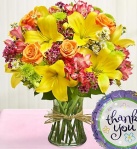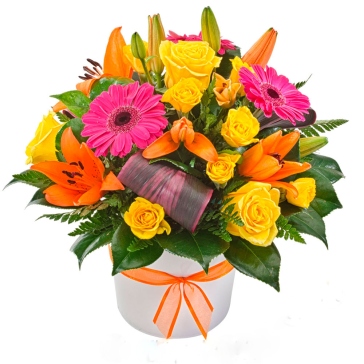We have absolutely no idea when the first floral arrangement may have been offered from one person to another and whether it was an assortment of flowers or a single stem with its subtle petals of color at the tip. Neither do we know the occasion prompting the offering. These questions remain after considerable searching for answers.
We do know, however, that the tradition crosses cultures and geography and even gender and age. It seems everyone gives flowers to everyone else at one time or another.
We also know, due to some very impersonal and objective science, that the giving and receiving of flowers of virtually any type is a very personal and subjective action driven by a variety of motivations with the singular result being an immediate expression of true pleasure by the receiver and gratitude in the giver for having been so generously received.
There are some traditional flower types and colours loosely tied to specific occasions and these definitions of tradition date to the historic antiquity of Egypt, Rome, Greece, Mesopotamia, China, and even in the highlands of Neanderthal culture. In the latter case, we know only that flowers adorned the graves of the departed. In all other cultures, all other traditional purposes abounded, for romance, friendship, sympathy in loss, victories and for get-well wishes when ill.
This last purpose is curious because while the others have significant emotional impact with a purpose, such as red roses given in hopes of acceptance of a romantic offer, or white lilies offered in sympathy for the loss of a loved one, receiving flowers when ill in hopes of a quick and full recovery would seem to have no allegiance to the flowers to help in the healing effort. We expect medicine and rest to accomplish the healing.
However, back to the science, briefly, it is known without doubt, by objective observation, that the receipt of flowers when ill has the immediate effect of a buoyed spirit and happy countenance.
Medical experts must bow to the added benefit, after all of their professional ministrations in the attack and defeat of disease, of the improvement of well-being and self-worth brought on by the introduction of happy news to the ill patient.
It is more than the visual impact of the variety of colours, and the fresh, vibrant appearance of the petals, the life-giving accent of green, and the most immediate sign of life in a barren landscape, and even the simple vase containing the flowers.
It is also more than the delicate aroma many flowers offer that permeates the room where the patient languishes while healing.
It seems to be an added, unknown third influence felt after the visual and olfactory senses are satisfied that uplifts the mind, body and soul of the ill to receive a bouquet of flowers with well wishes for a quick recovery, as if the flowers, themselves, would command healing by their very presence.
The joy of receiving flowers when ill is measureable and priceless.




